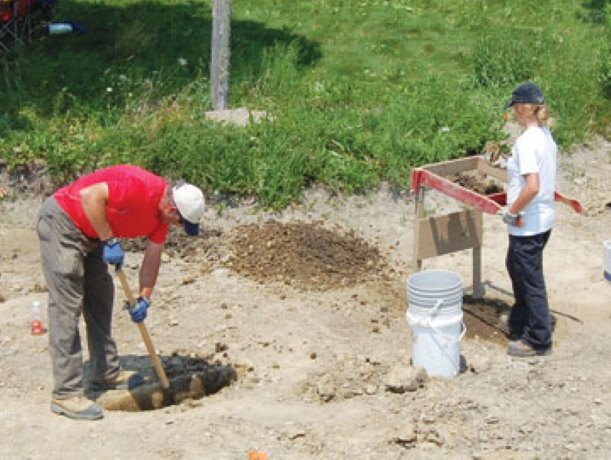Not always fully understood or considered site servicing by developers and contractors — or at least until very recently — archaeological assessments are nevertheless an integral and often mandatory pre-construction activity on numerous projects throughout Ontario.
Not always fully understood or considered site servicing by developers and contractors — or at least until very recently — archaeological assessments are nevertheless an integral and often mandatory pre-construction activity on numerous projects throughout Ontario.
Approximately 1,800 archaeological assessments are conducted each year by the province’s 180 professional licensed archaeologists and some of their findings have included pioneer homesteads, buried wharves along the lakeshore, ancient burials and forgotten pioneer cemeteries, says Denelle Balfour, spokesperson for the Ministry of Tourism & Culture, which licenses them under the Ontario Heritage Act and reviews their work.
Included in that list is Shaun Austin, senior archaeologist with AMEC Earth & Environmental, currently conducting an assessment at the future site of the Bram East Library and Community Centre in northeast Brampton.
As with all archaeological sites in the province, the assessment has to be completed before any actual construction begins, he says.
Countless archaeological sites were lost in Ontario prior to 1980 when major changes were made to the Ontario Heritage Act. Now, assessments are often required by municipalities or other government agencies as a condition for development approval. That includes both public and private sector projects, says Austin.
There is a wide range of Provincial and Federal legislation to ensure assessments are completed when and where necessary such as the Planning Act, the Ontario and Canada Environmental Assessment Acts, the Aggregate Resources Act, the Cemeteries Act, the Provincial Parks Act, the Niagara Escarpment Plan and the Greenbelt Act, he explains.
The decision to place such a condition on a proposed development also considers the property’s perceived potential as a repository of artifacts, whether they are from Ontario’s early pioneer days or prior to European settlement.
While historical research may provide some basic information on the early Euro-Canadian settlement history, no written records exists for the majority of the 11,000 years that people have lived in Ontario, says Austin. “This portion of history can only be documented through archaeological assessments.”
As both aboriginal encampments and pioneer settlements needed water to exist, a site’s proximity to a river or watercourse may be an indicator it has archaeological value, he explains.
Certainly that is the case at the Brampton site. A tributary of the West Humber River runs through a portion of the former farm where there was an 1830s farmhouse. Some of their findings include the foundation of an early frame house, a root cellar, fragments of dishes and two early coins. In addition, four Aboriginal artifacts were also discovered including two projectile points or arrow heads, one of which dates back to 3000 to 2500 BC. The other is from 2500 to 1850 B.C.
Assessments are usually a three- to four-stage process with the first stage been conducted off site. “We look at old insurance maps, atlas maps, early documents, air photos. Anything we can get our hands on.”
Then the work moves into the field, both literally and figuratively. In greenfield projects, such as the Brampton one, the developer is required to plough the entire area.
“Then we wait for two substantial rainfalls and we walk the entire field at five-metre intervals looking for artefacts.”
From there the assessment progresses to more detailed phase that includes concentrated test pit digging right up to actual salvage and storage of the artefacts in a secured off site location, says Austin.
The process is more complicated when it comes to brownfield projects. The first task is to ascertain if the site has been “disturbed”— in other words have any artefacts been removed, lost or destroyed, he explains.
But in all assessment projects the objective is to identify and save remnants of our history. It’s not about unduly hindering development and construction.
“A popular misconception is that archaeological assessments unduly slow up the development of projects. This simply isn’t the case,” says Austin, explaining AMEC and other archaeological consulting firms try to work with developers in a co-operative manner.
“We try to educate our clients about the need to conduct archaeological assessments as early as possible in the development process, not only to permit us the time we need to complete our work but also allow them the flexibility to alter their plans, if necessary.”
Developers who ignore provincial legislation run the risk of having their projects shut down and receiving a fine that can be a high as $1 million, says the Ministry of Tourism’s Denelle Balfour. And it isn’t only the developer who can be held liable. A contractor “who knowingly disturbs” artefacts that may have been missed during the assessment can also be held liable, she says.











Recent Comments
comments for this post are closed